Munch’s genius beyond the Scream ★★★★★
Edvard Munch at the Courtauld Gallery
Edvard Munch’s fame is closely associated with his painting The Scream. But his lesser-known masterpieces — 18 of them shown at the Courtauld Gallery this summer, 11 of them for the first time outside Scandinavia — reveal the genius of an artist whose ability to capture different psychological stages of the human mind remains somewhat unrivalled.
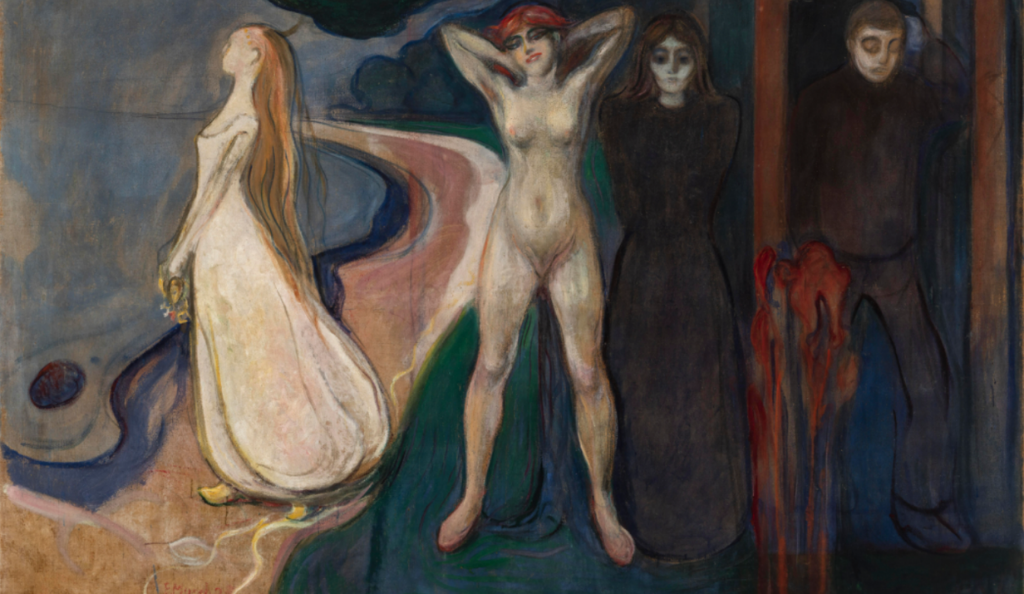
It is a rainy morning and reaching the top floor of the Courtauld Gallery to visit the Munch exhibition, we pass some of the Courtauld’s finest selections of Monet, Pissarro and Renoir.
So it is not a hazard that the first Munch painting we see in the adjacent room is influenced by Impressionists. Created after the Norwegian artist travelled to Paris, the soft palette painting of A Boulevard in Oslo is joyful and escapist and a far cry from the terrifying Evening on Karl Johan, with its eery skeletal figures and somber colours, incidentally depicting the same Boulevard and executed only twelve years later.
This is the extent of Munch’s journey as a painter. The Courtauld Gallery’s curation, made possible thanks to the contribution of the KODE Art Museum in Bergen which is home to one of the most important Munch collections in the world, offers a unique opportunity to follow the artist throughout his career.
Munch’s early pictures were already technically impressive and often controversial — Morning, showing a maid in a déshabillé and painted when Munch was only 20, created a scandal. They also laid the ground for his tortured work to come.
Eery atmosphere — captured mostly during midsummer nights like in his House in Moonlight picture — equivocal feelings, extreme emotions, fascination with death… all those themes, central in Munch’s oeuvre, can be found in his early works.
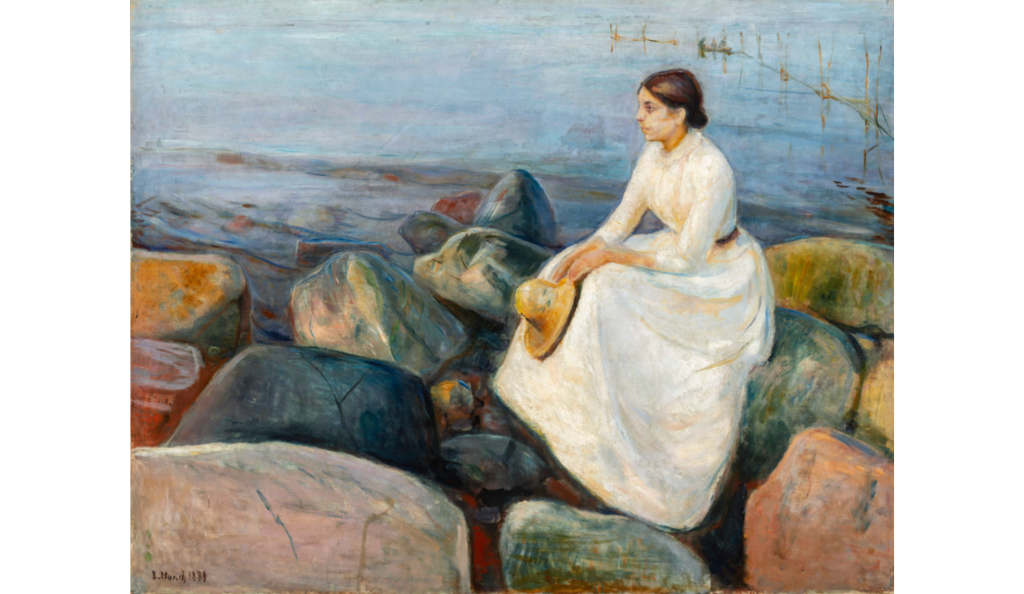
From a painting of his sister Inger lost in thoughts on a pebbled beach to Melancholy, depicting the heart-broken figure of a young man sitting on a shore and looking at the sea, the shoreline symbolises a place in transition where transgression can happen.
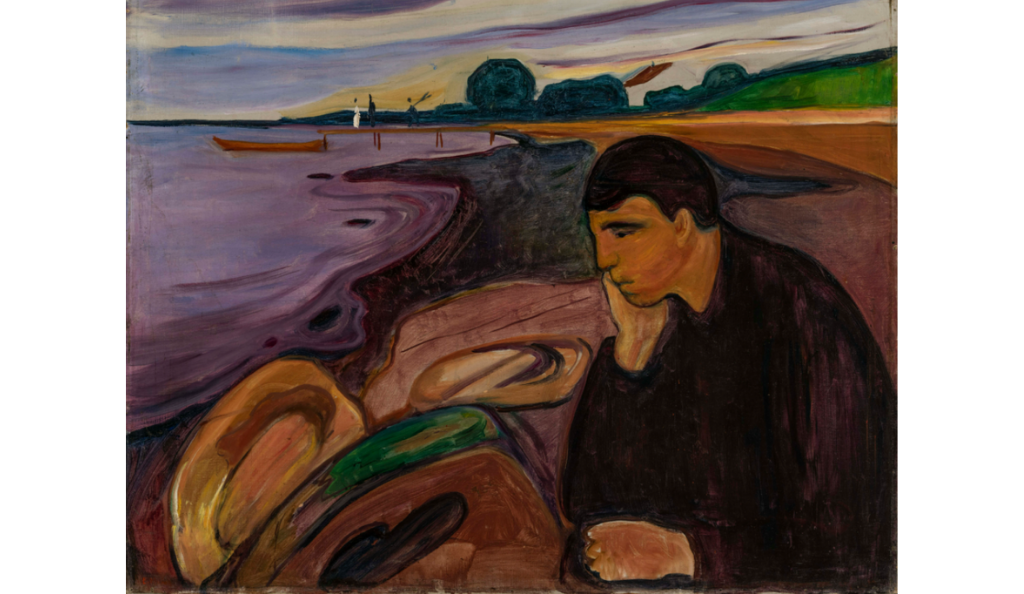
It is impossible not to be stunned by Munch’s three paintings belonging to the Frieze of life, a series of works — The Scream is part of it — that explores human experience and made Munch become Munch.
The monumental Women in Three Stages and the haunting At Death Bed tell off anxiety, grief and the inexorability of life. In Evening on Karl Johan, light plays a key role. It is not so much the mysterious midsummer night light of his House in Moonlight, but a strange moonlight mixed with gaslight. And for the first time, Munch uses those skeletal faces that he will then repeat in his Scream paintings.
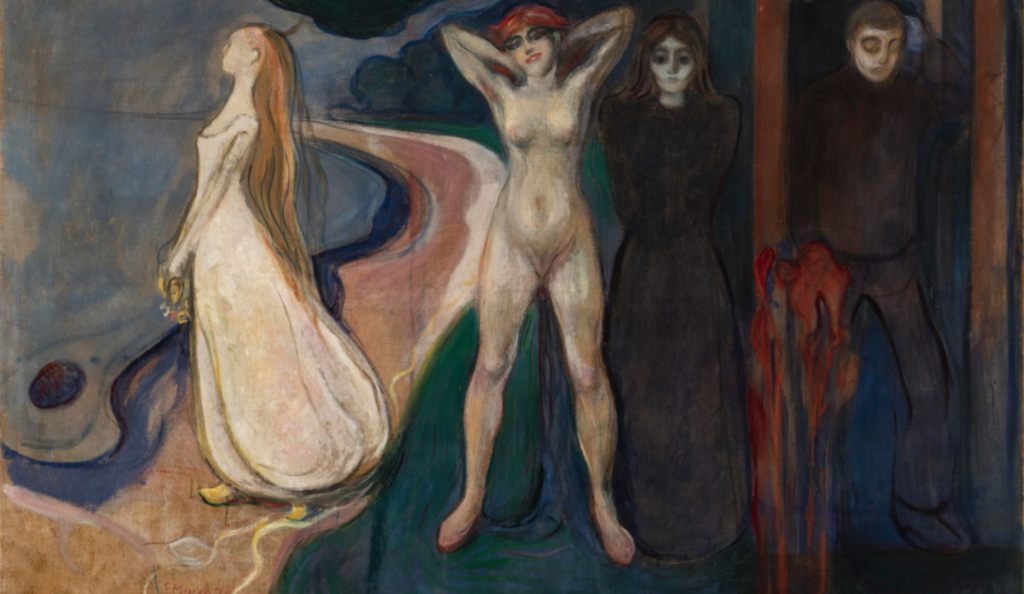
But perhaps it is Children Playing in the Street in Åsgårdstrand that stays with us. Munch’s vision of womanhood is present in many of his paintings. This one tells of a little girl’s anger, boredom, frustration, and need for help. She is looking at us and silently screaming. Chilling and strangely timely.
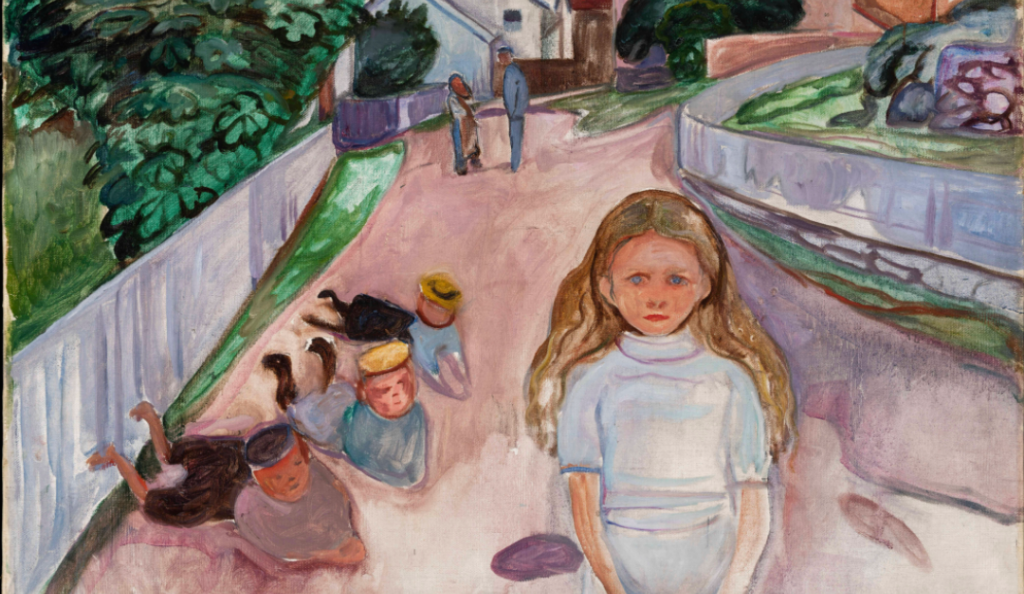
TRY CULTURE WHISPER
Receive free tickets & insider tips to unlock the best of London — direct to your inbox
| What | Munch’s genius beyond the Scream |
| Where | Courtauld Gallery, Strand, London, WC2R 0RN | MAP |
| When |
27 May 22 – 04 Sep 22, 10:00 AM – 6:00 PM |
| Price | £18 |
| Website | Please click here for more information |